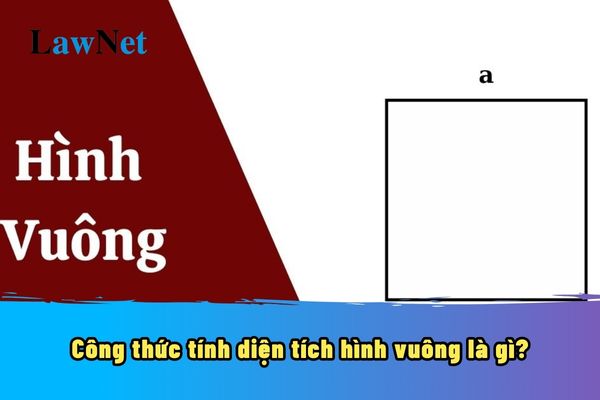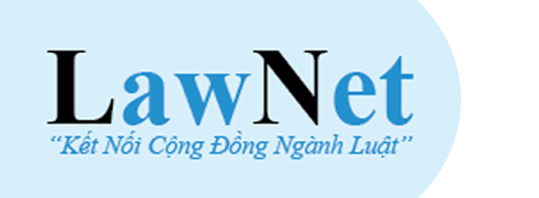What is formula for calculating the area of a square? When do students in Vietnam study the formula for calculating the area of a square?
What is formula for calculating the area of a square?
The area of a square is calculated by multiplying the length of one side by itself.
*Formula:
S = a x a
Where:
S: Area of the square
a: Length of one side of the square
*Example:
If a square has a side length of 5cm, the area of that square is:
S = 5cm x 5cm = 25 cm²
Note:
The area is calculated in units of area (e.g., cm², m², km²...)
All sides of a square are equal, so knowing the length of one side is sufficient to calculate the area.
*Some practice exercises:
Simple problem:
- A square has a side length of 8cm. Calculate the area of that square.
- A plot of land is square-shaped with a side length of 25m. What is the area of the plot in square meters?
Problem of finding the side of a square given the area:
- A square has an area of 64cm². Calculate the length of the side of that square.
- A square playground has an area of 100m². If someone wants to fence around the playground with netting, how many meters of netting is needed?
Combined problem:
- A rectangle has a length twice its width, and its area is equal to that of a square with a side length of 8cm. Calculate the perimeter of the rectangle.
- A square has a perimeter equal to that of a rectangle with a length of 12cm and a width of 8cm. Calculate the area of the square.
Solution hint:
Step 1: Read the problem carefully to identify the shape and given data.
Step 2: Choose the appropriate formula for calculation.
Step 3: Perform the calculation and provide the result.
Step 4: Check the result and units.
Example solution for problem 1 (simple problem):
The square has a side length of 8cm.
Area of the square = side x side = 8cm x 8cm = 64cm².
Thus, the area of the square is 64 cm².
*Note: The information is for reference only./.

What is formula for calculating the area of a square? When do students in Vietnam study the formula for calculating the area of a square? (Image from the Internet)
When do students in Vietnam study the formula for calculating the area of a square?
Pursuant to Section 5 of the Mathematics Education Program issued with Circular 32/2018/TT-BGDDT on the content requirements for grade 3 mathematics:
*Calculations and estimations with measure units:
- Being able to convert and calculate with length measures (mm, cm, dm, m, km); area (cm²); mass (g, kg); volume (ml, l); time (minutes, hours, days, weeks, months, years); Vietnamese currency learned.
- Calculate the perimeter of a triangle, quadrilateral, rectangle, square when the length of the sides is known.
- Calculate the area of a rectangle, square.
- Make estimations of measurement results in simple cases (e.g., a chicken weighing about 2kg,...).
- Solve some practical problems related to measurements.
Therefore, according to the regulations, students will learn to calculate the area of a square in grade 3 Mathematics.
Can homemade teaching aids be used in grade 3 mathematics teaching in Vietnam?
Pursuant to Section 8 of the Appendix to the General Education Program in Mathematics issued with Circular 32/2018/TT-BGDDT on the teaching aids in the grade 3 Mathematics program:
- Teaching aids must serve the objectives of Mathematics teaching, be appropriate to the learning content and students, support innovation in teaching methods, and avoid increasing the teaching content, workload for teachers, and unnecessary expenses.
- Use at the right time and place, avoid formalism or abuse that causes adverse effects, reducing the effectiveness of the teaching process; provide conditions for students to actually practice, operate with teaching aids, thereby helping students actively and positively explore and discover knowledge and contribute to developing the "competence to use tools and means of learning mathematics."
- Encourage the use of audiovisual media, modern technical means to support the teaching process, while valuing the use of traditional means. When conditions permit, teachers guide students on how to search for information, materials on the Internet or reputable educational TV programs to expand their understanding and self-learning capability.
- Enhance homemade teaching aids: In addition to the minimum teaching aids prescribed in the list issued by the Ministry of Education and Training, it is necessary to mobilize the initiatives and creativity of students, teachers, and parents in exploiting, designing, and using homemade teaching aids.
- Flexibly combine the use of different types of teaching aids: Each type of teaching aid has certain advantages and limitations, thus depending on the lesson content and teaching methods, different types of teaching aids can be combined and coordinated in a reasonable, scientific, and lively manner.
Therefore, according to the regulations of the Mathematics program regarding teaching aids, teachers are encouraged to enhance the use of homemade teaching aids. In addition to the minimum teaching aids prescribed in the list issued by the Ministry of Education and Training, it is necessary to mobilize the initiatives and creativity of students, teachers, and parents in exploiting, designing, and using homemade teaching aids.

